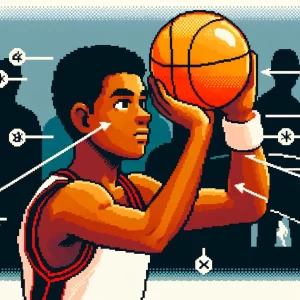
The (Not-So) Hidden Dangers of Competitive Eating
Have you ever marveled at the sheer amount of food competitive eaters can consume in mere minutes? Events like Nathan’s Famous Hot Dog Eating Contest bring together the world’s top “gurgitators” to see who can devour the most in record time. It’s truly an American spectacle.
The Rise of Competitive Eating
Competitive eating has exploded in popularity over the past few decades. The International Federation of Competitive Eating (IFOCE) oversees numerous events worldwide, drawing large audiences and extensive media coverage. These events have turned professional eaters into celebrities, with some, like Takeru Kobayashi, breaking records by consuming mind-boggling amounts of food in minutes.
The Science Behind Speed Eating
To understand how competitive eaters manage to consume such vast quantities of food so quickly, researchers conducted a study using gastrointestinal fluoroscopy. This technique allows scientists to observe the stomach’s inner workings in real-time. The study compared a top-ranked speed eater with a control subject during a simulated eating competition.
The Test Setup
The speed eater, a slim and fit 29-year-old, was compared to a larger 35-year-old control subject. Both participants underwent water load tests to measure their stomach capacities. The speed eater significantly outperformed the control, showcasing an extraordinary ability to accommodate large volumes of food and water.
Stomach Expansion: The Key to Success
During the actual eating test, the control subject could only manage seven hot dogs before feeling uncomfortably full. In contrast, the competitive eater devoured 36 hot dogs in just 10 minutes. Fluoroscopic images revealed that the speed eater’s stomach expanded dramatically, transforming into a massive, flaccid sac that could hold an enormous amount of food. This expansion was accompanied by a noticeable decrease in stomach contractions, allowing the stomach to stretch even further without quickly moving the food into the intestines.
Health Risks and Long-Term Effects
While competitive eaters may not suffer the typical injuries associated with other sports, their unique abilities come with significant health risks. The study speculates that the extreme stretching of the stomach can lead to several long-term problems:
- Morbid Obesity: As competitive eaters age, maintaining the discipline to avoid overeating might become increasingly difficult, leading to substantial weight gain.
- Gastric Issues: Chronic stomach distension could result in severe nausea, vomiting, and even a condition called gastroparesis, where the stomach can’t empty itself properly.
- Surgical Interventions: In extreme cases, the stomach might become so damaged that partial or total removal (gastrectomy) could be necessary to restore normal eating functions.
The Fine Line Between Training and Harm
Competitive eaters often train their bodies rigorously to achieve their goals. This training involves progressively consuming larger quantities of food, which over time, alters their stomach physiology. Discussions with the studied speed eater revealed that intense training allowed him to overcome the natural sensations of fullness and satiety. However, this relentless training also makes them prone to never feeling truly full, posing a constant risk of overeating.
Future Concerns
The study’s competitive speed eater managed to stay fit and avoid obesity by strictly controlling his food intake. But what happens when competitive eaters can no longer adhere to such strict regimes? As they age, the risks of chronic binge eating and associated health issues increase significantly. The potential need for medical interventions like gastrectomy highlights the severe long-term dangers of this sport.
Conclusion
Competitive eating, while entertaining, poses serious health risks to its participants. The ability to consume large amounts of food rapidly results from a combination of inherent stomach compliance and rigorous training. However, the potential for long-term health issues like morbid obesity and severe gastric complications cannot be overlooked. As the sport continues to grow, organizations like the IFOCE must monitor the health of their athletes to ensure their well-being.
Join the Discussion
What do you think about the health risks associated with competitive eating? Should there be more regulations to protect the participants? Share your thoughts in the comments below!
Transform Your Science World:
Get the latest and most inspiring scientific updates with ‘This Week in Science’! Perfect for educators and science enthusiasts, our free weekly newsletter delivers groundbreaking research and stories that ignite your passion for learning and teaching. Sign up today and transform your approach to science.



